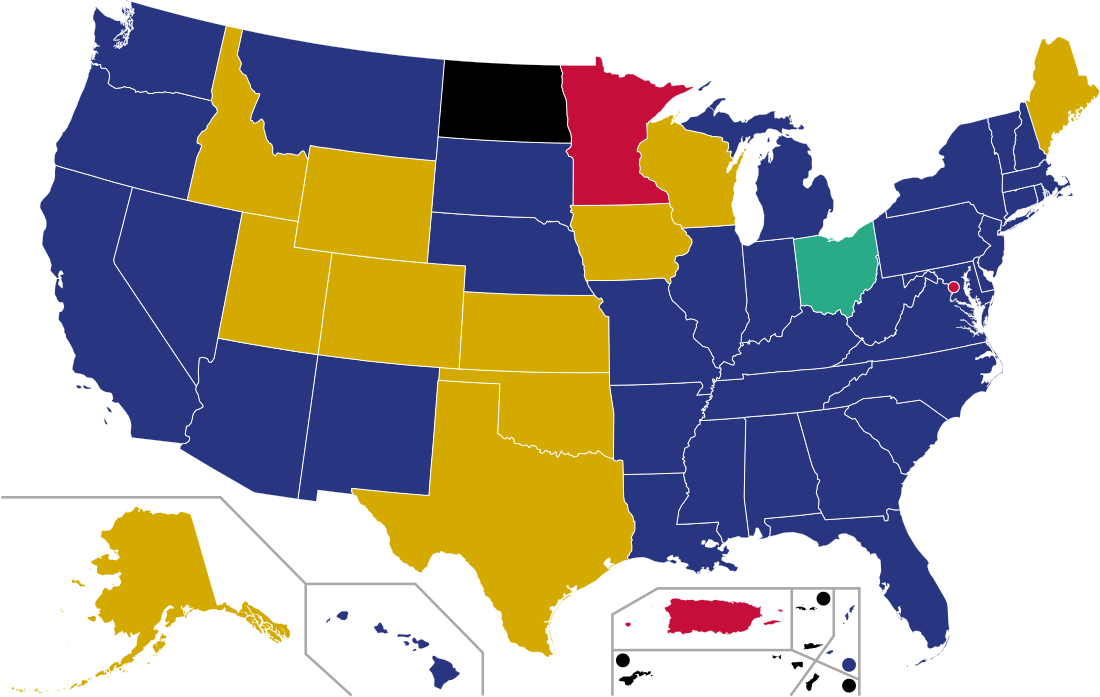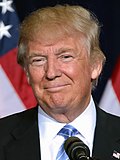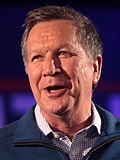2016 Republican Party presidential primaries
selection of the Republican Party nominee for President of the United States in 2016 From Wikipedia, the free encyclopedia
Remove ads
The 2016 Republican Party presidential primaries and caucuses were held between February 1 and June 7, 2016. Sanctioned by the Republican Party, this series of elections selected the 2,472 delegates to the Republican National Convention, which selected the Republican Party's nominee for President of the United States.
On May 4, 2016, Donald Trump of New York became the presumptive nominee after his remaining challengers Ted Cruz of Texas and John Kasich of Ohio dropped out.[2][3]
Remove ads
Nominee
Nominee
Candidates
On March 23, 2015, Senator Ted Cruz of Texas formally announced his candidacy at Liberty University, and in the following months, sixteen more candidates (bringing the total to 17) entered the race: Former Governor Jeb Bush of Florida, neurosurgeon Ben Carson of Florida, Governor Chris Christie of New Jersey, Senator Ted Cruz of Texas, businesswoman Carly Fiorina of Virginia, Former Governor Jim Gilmore of Virginia, Senator Lindsey Graham of South Carolina, Former Governor Mike Huckabee of Arkansas, Governor Bobby Jindal of Louisiana, Governor John Kasich of Ohio, Former Governor George Pataki of New York, Senator Rand Paul of Kentucky, Former Governor Rick Perry of Texas, Senator Marco Rubio of Florida, Former Senator Rick Santorum of Pennsylvania, businessman Donald Trump of New York, and Governor Scott Walker of Wisconsin.
The total of 17 candidates makes it the 2nd largest presidential candidate field for any single political party in American history.[4]
Before the Iowa caucuses on February 1, candidates Perry, Walker, Jindal, Graham, and Pataki withdrew due to low polling numbers. While leading many polls entering the Iowa caucuses, Trump came in second behind Senator Cruz. Carson dropped out after Super Tuesday on March 4, 2016.
Remove ads
Money raised
This is an overview of the money used in the campaign as it is reported to Federal Election Committee and released on February 22, 2016. Outside groups are Independent expenditure only committees also called PACs and SuperPACs. Several such groups normally support each candidate but the numbers in the tablet are a total of all of them. This means that a group of committees can be shown as technical insolvent (shown in red) even though it is not the case of all of them.
The Campaign Committees debt are shown in red if the campaign is technical insolvent. The source of all the numbers is Center for Responsive Politics.[5] Jim Gilmore's information is not currently available.
Notes
- ∗This is mainly a personal loan from the candidate to the campaign as part of the candidate's self-financing.
Remove ads
Results

Donald Trump
Ted Cruz
Marco Rubio
John Kasich
Ben Carson
Tie
After the Iowa primaries, candidates Huckabee, Paul and Santorum withdrew due to poor performance at the ballot box. Following the New Hampshire primary, which was a sizable victory for Trump, candidates Christie, Fiorina and Gilmore withdrew. After the conclusion of the South Carolina primary, Bush withdrew from the race following a second win for Trump. Ben Carson dropped out on March 4, 2016. Marco Rubio dropped out on March 15, 2016 after losing to Trump in his home state of Florida. Ted Cruz dropped out on May 3, 2016 after losing to Trump in Indiana.
Remove ads
References
Other websites
Wikiwand - on
Seamless Wikipedia browsing. On steroids.
Remove ads









